冯远,壬辰岁生于沪,籍无锡。幼时嗜画,尤钟连环图及插图。戊午年,入浙美院中国画研习,师事方增先。庚申年,卒业留校,专攻中国人物画之教研与创作。
Feng Yuan, born in the year of Renchen in Shanghai, originally from Wuxi. As a child, he was fond of painting, especially comic strips and illustrations. In the year of Wuwu, he entered the Chinese painting graduate program at Zhejiang Academy of Fine Arts, studying under Fang Zengxian. In the year of Gengshen, he graduated and stayed at the school, specializing in the teaching and creation of Chinese figure painting.
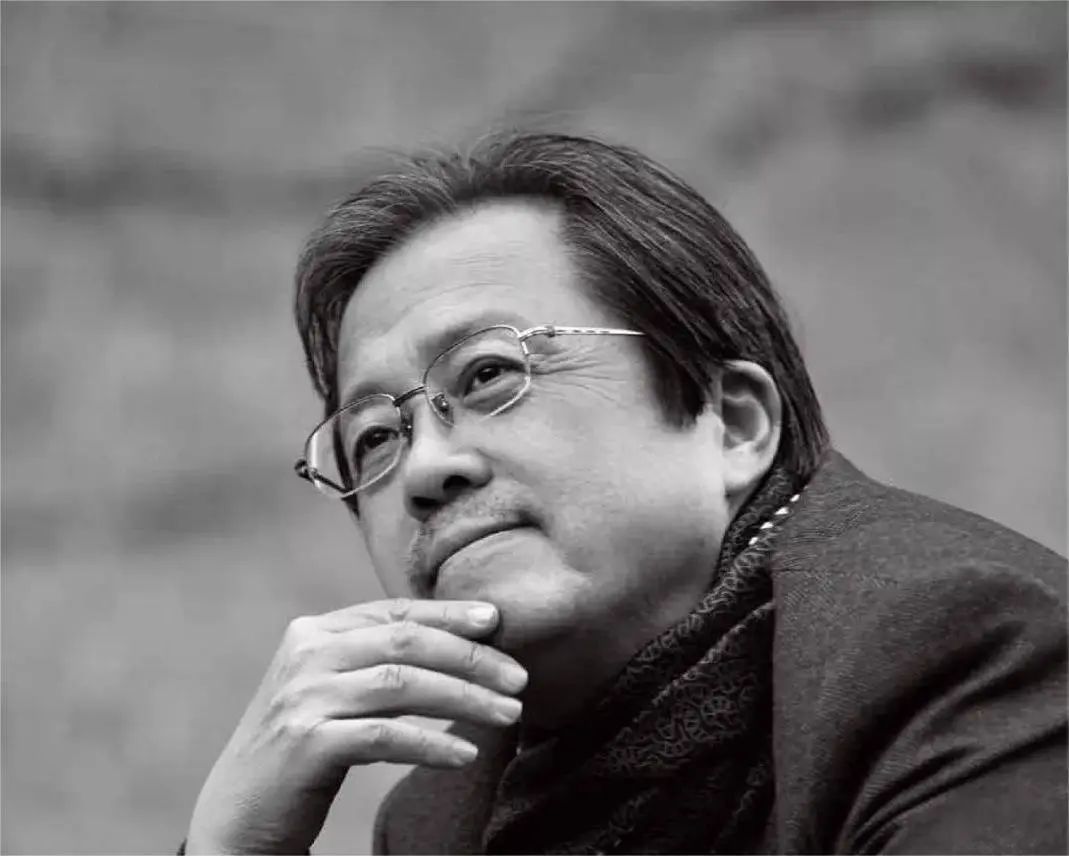
中国画察世之法独具,宗“人与自然和谐”之旨,俯仰天地,品察万类,抒情畅意。以中国笔墨写物象,妙在似与非似之间,求气韵生动、意境高远。观画者与画家互动,画意得以显现,观者会意,共鸣顿生,成绝妙之审美境界。冯远之水墨,尤称道者,在其加强理性之彰,重哲理、史事及人生之思虑。其画冷峻幽深,气象高远,兼具诗意。结构与语言,皆含哲理之启示与深邃之趣,成其独特之审美旨趣。千百年来,中国水墨每陷类型与概念之弊,与绘事之审美特性相背。冯远之水墨,正于克此弊端中得其独义。冯远之创作,主以写实具象,兼综诸风。其画人物,造型谨严传神,画风拙朴浑厚,笔墨苍劲。嗜好史题,善营浩瀚之境,注重意蕴,力传宏大之精神,亦重新颖精致之形式与语言。冯远亦尝简易抽象之绘,意在博采兼蓄。工余,勤于笔耕,热衷研创理论,每逢风格嬗变,竭力求其至境。
Chinese painting has a unique way of observing the world, adhering to the principle of "harmony between man and nature," surveying heaven and earth, and appreciating all creatures, expressing emotions and thoughts freely. Using Chinese ink and brush to depict objects, it captures the subtlety between resemblance and non-resemblance, pursuing a vivid charm and profound artistic conception. In the interaction between the viewer and the artist, the artist's intention is manifested, and the viewer's understanding and resonance are achieved, creating a wonderful aesthetic experience.
Feng Yuan's ink paintings are particularly praised for their emphasis on rational expression, focusing on philosophical, historical, and existential reflections. His paintings are cold and deep, with a lofty atmosphere and poetic quality. The structure and language contain philosophical insights and profound interest, forming his unique aesthetic orientation. For thousands of years, Chinese ink painting has often fallen into the pitfalls of stylization and conceptualization, contrary to the aesthetic nature of painting. Feng Yuan's ink art finds its unique significance in overcoming these pitfalls.
Feng Yuan's creations primarily follow a realistic and figurative style, incorporating various other styles. His figure paintings have precise and expressive forms, with a simple and robust style, and strong, rough brushwork. He loves historical subjects and excels at creating grand scenes, emphasizing the ideological content and striving to convey a grand spirit, while also paying attention to the novelty and refinement of artistic forms and language. Feng Yuan also experiments with simple and abstract painting, aiming to learn from a broad range of sources. In his spare time, he diligently engages in writing and theoretical research, always striving for excellence with each stylistic change.
冯远谓中国当代之艺,方在发展成形之际,未有真成形、成熟、成功之艺式。所谓“正在”,乃指其尚处初期。自上世纪八十年代末、九十年代始,中国艺士效仿挪借,习鉴西方之艺观、言语、形式与材质,将西方现代艺理与中华文化元素相融,于斯过程中,变易而日进焉。中国画之创,写实间抽象,既异西方古典精细再现,亦不同西方当代抽象之法。其特有形式,易于观者与同道理解,笔墨之言虽异西方绘画之色调,然中国画始于写实,终于虚,界限分明,非全然抽象。其与西方当代绘画之新写实、具象表现、印象及象征诸主义之观念,实异曲同工焉。
Feng Yuan believes that Chinese contemporary art is still in the process of development and formation, and has not yet truly formed, matured, or succeeded in its unique artistic style. The term "developing" refers to its initial stage. Since the late 1980s and 1990s, Chinese artists have been imitating, borrowing, learning, and adopting Western artistic concepts, language, forms, and materials, integrating Western modern artistic ideas with Chinese cultural elements, evolving and progressing through this process.
The creation of Chinese painting lies between realism and abstraction, differing from the meticulous reproduction of Westernical painting and the expressive methods of contemporary Western abstraction. Its unique form is easily understood by viewers and peers. Although the language of ink and brush differs from the color tones of Western painting, Chinese painting starts with realism and ends with abstraction, maintaining a clear boundary, and is not entirely abstract. It shares common ground with the ideas of new realism, figurative expressionism, impressionism, and even symbolism in contemporary Western painting.

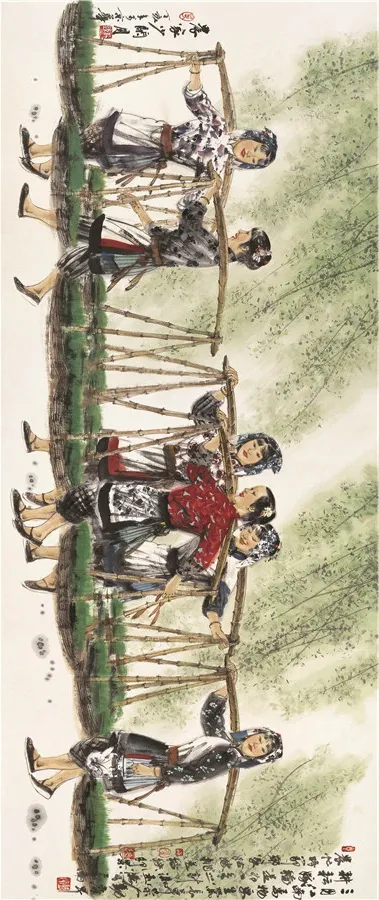
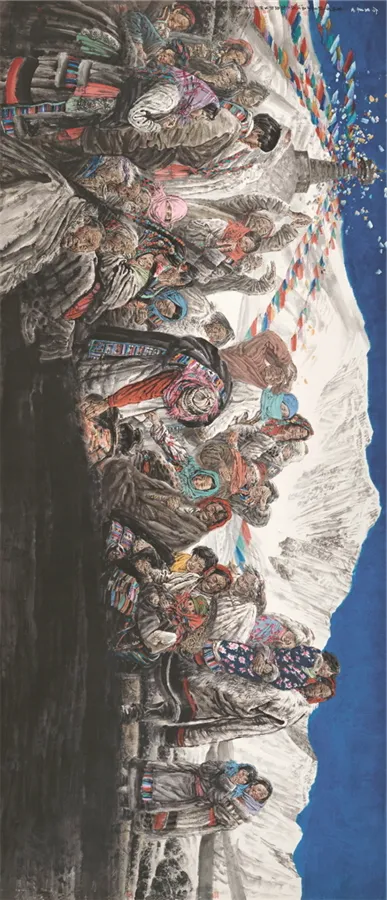
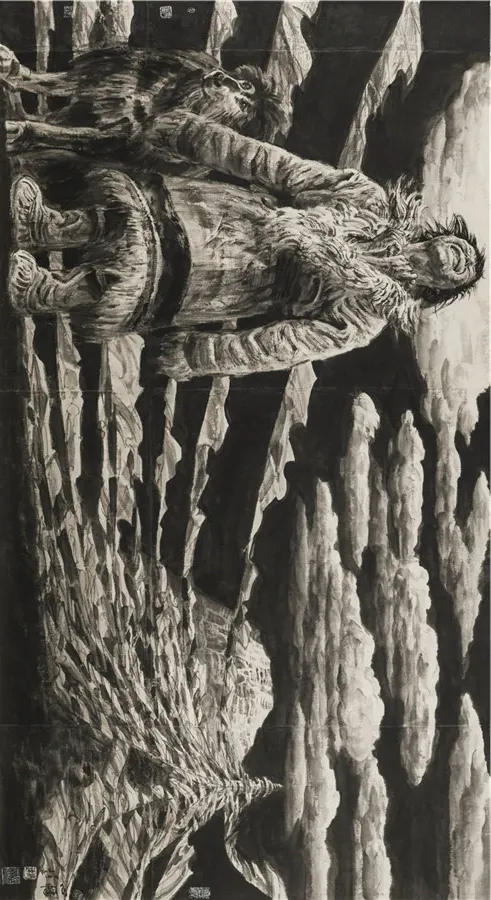

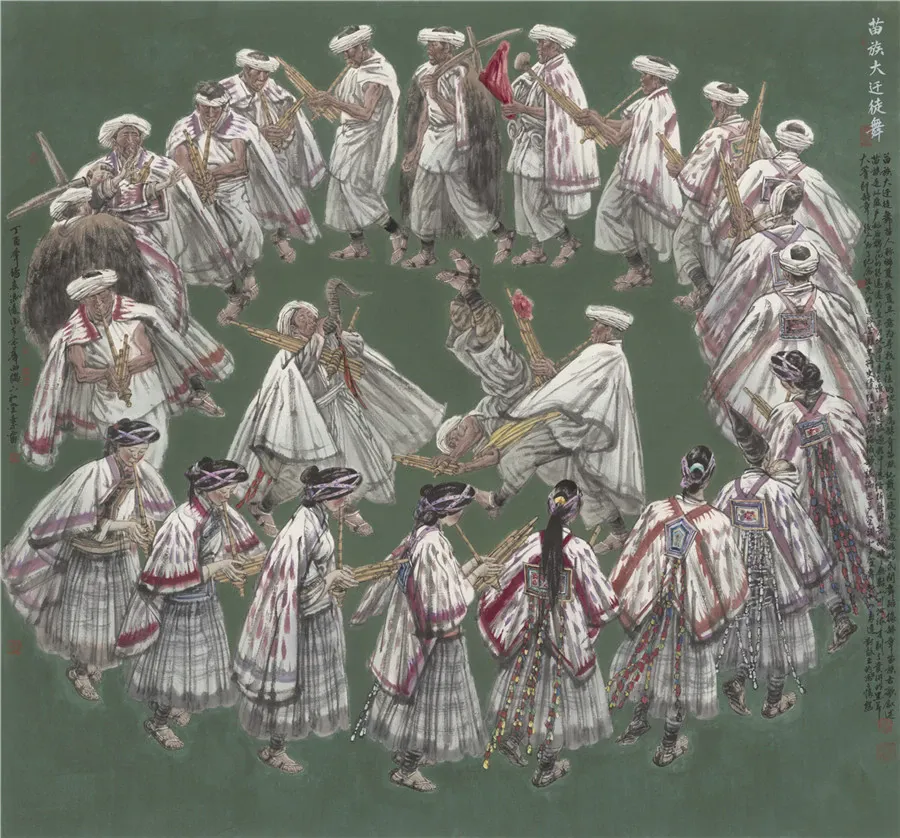
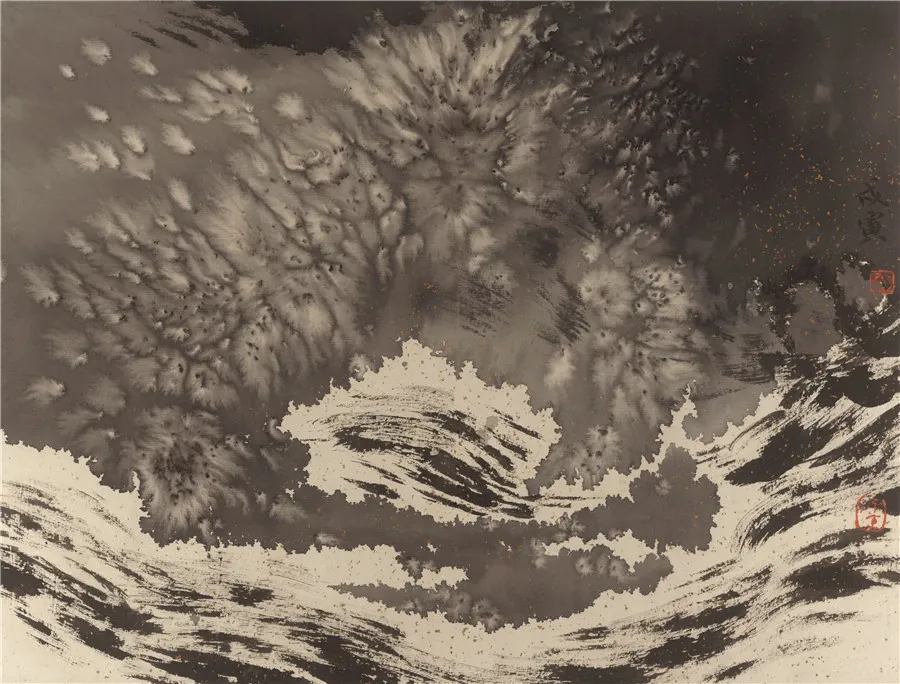
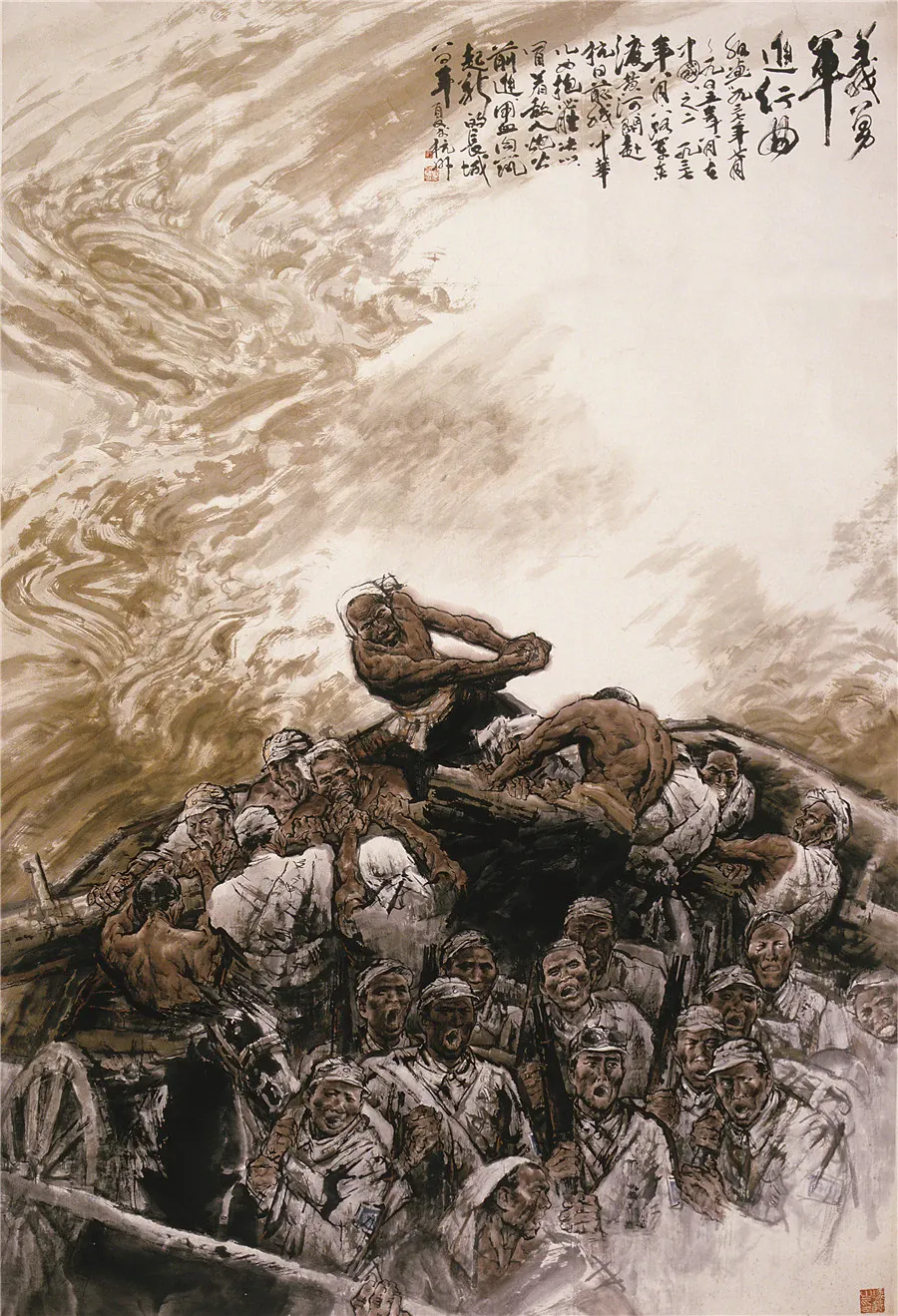

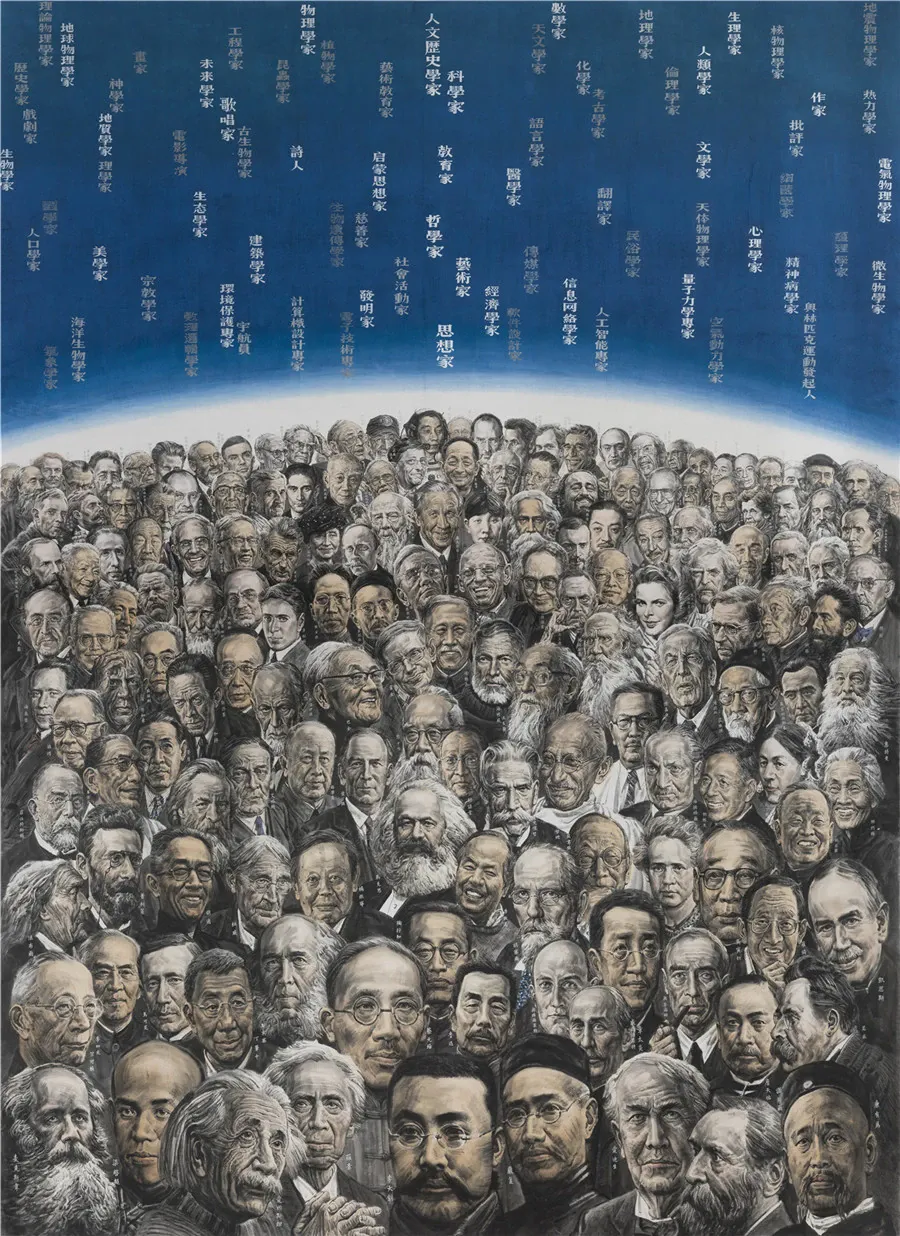
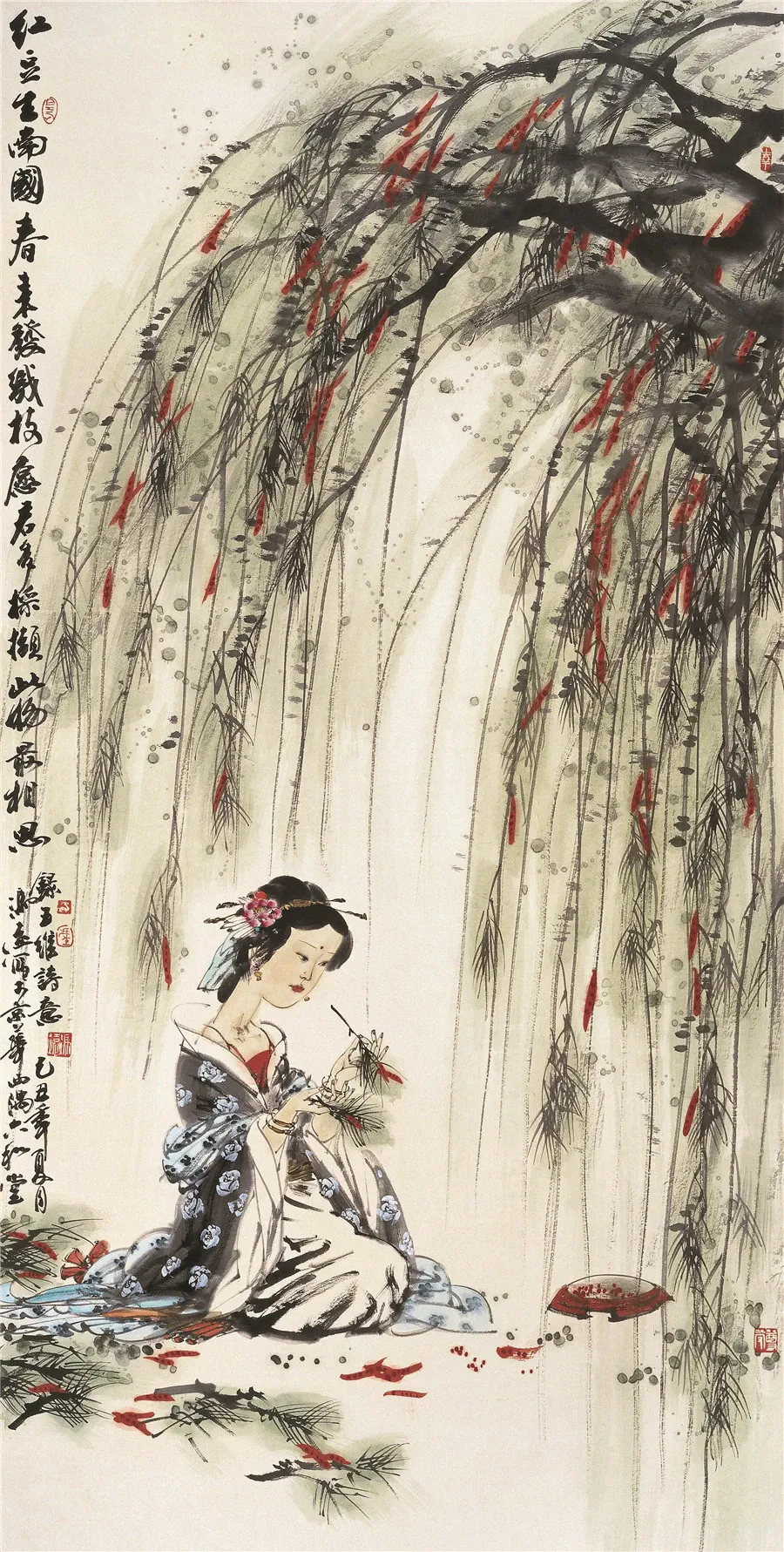
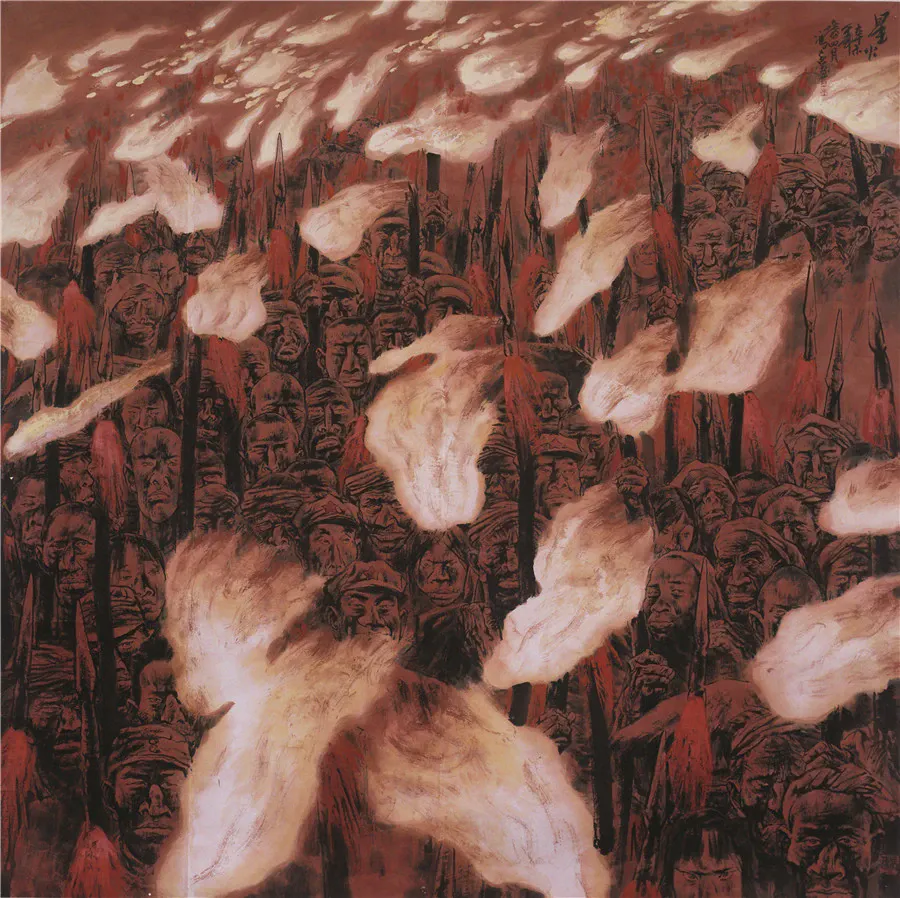
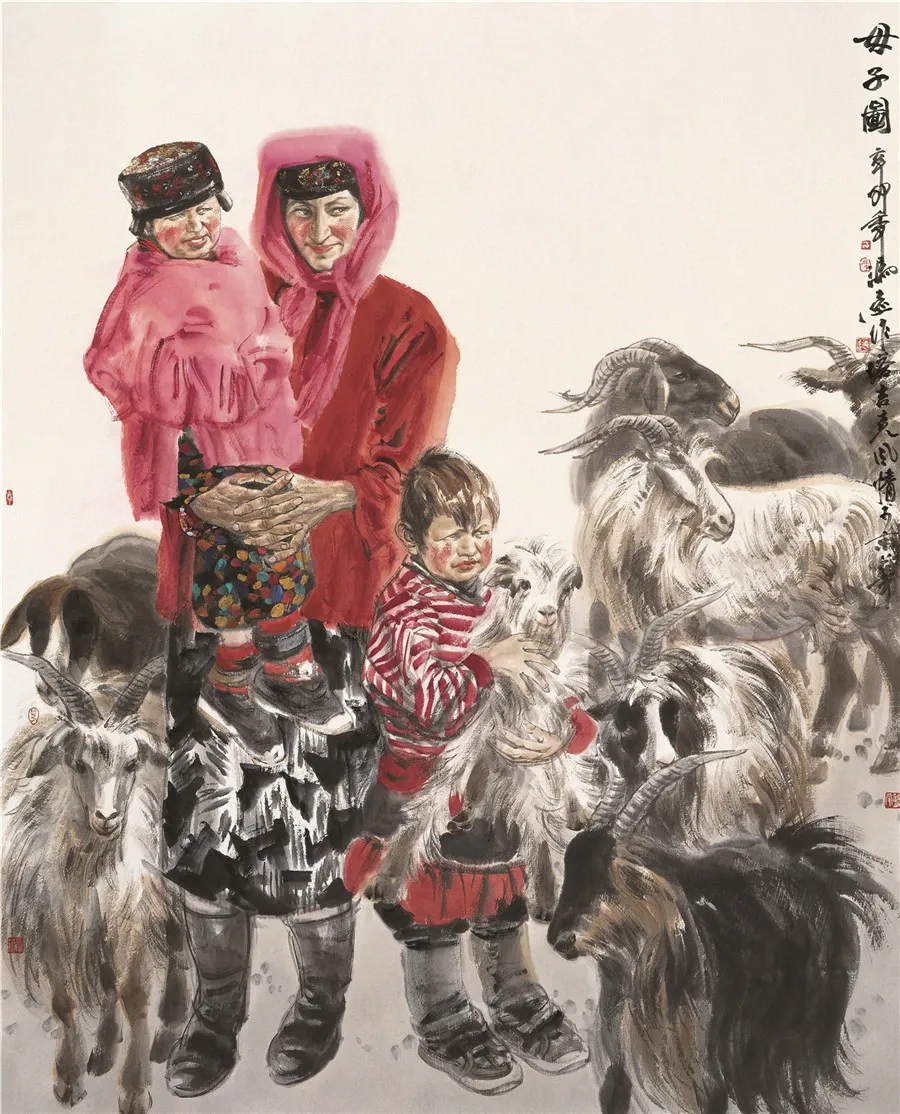
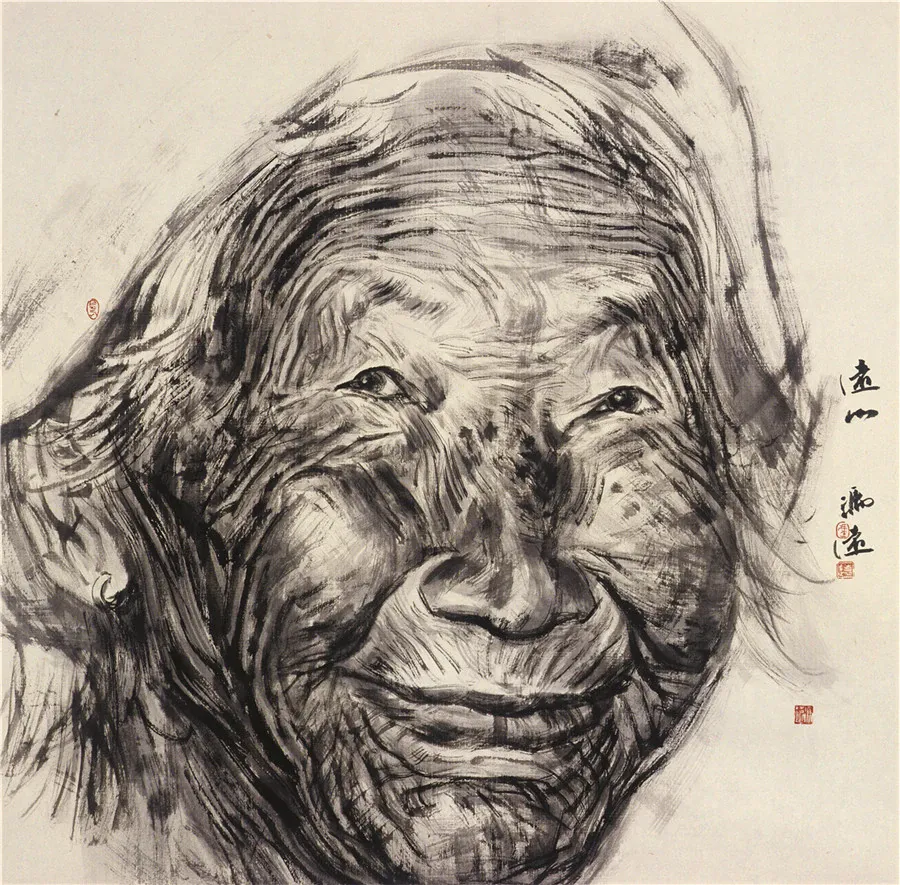

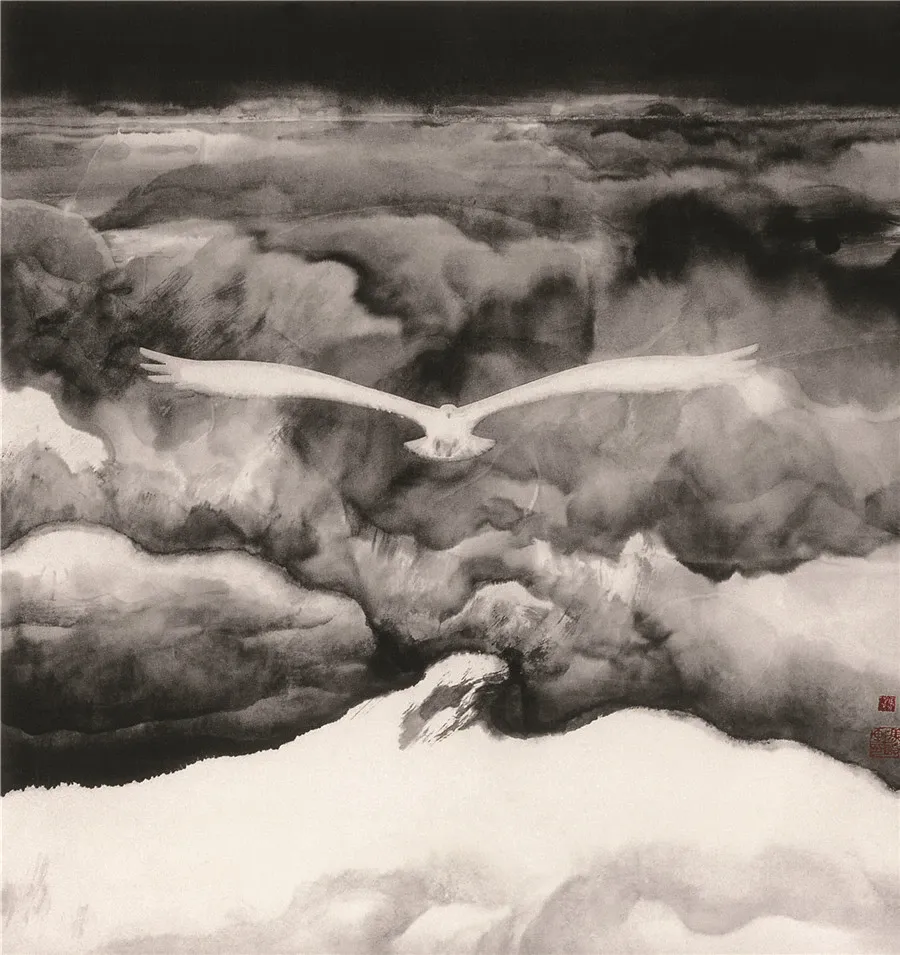
改革开放三十载,中国已涌现勇于创新、变革之艺士,功业斐然,促当代艺术生成进步,或得西方同道赞誉。然今时,游戏规制、价值准绳,话语权犹操于他人,东西策展人于“前卫”之义,亦有特指。中国当代之艺,尚循他人规准,思谋创意焉。冯远谓,中国画乃中华文化重艺,蕴浓厚民族之韵。其历史渊远,与中华文明并行不辍,未来亦将如斯。中国画与西洋画,各为异域高端艺事,中国画异他邦绘事,秉持人与自然和谐共生、天人合一之理,与我邦所倡和谐之旨相契,信中外观者心灵相契,可辨其良莠。中国画尚绘事、书性,重意境、比兴、象征,追求深远艺境。此独特之艺,淋漓展中华文化之精髓,使人感人与自然和谐共生之美。
ver the past thirty years of reform and opening up, China has seen the emergence of a group of artists who are brave in innovation and change, achieving remarkable results and promoting the formation and progress of contemporary art, with some even gaining recognition and praise from Western peers. However, at present, the rules of the game and the standards of value are still controlled by others, and curators from both East and West have specific interpretations of "avant-garde." Chinese contemporary art is still thinking and creating under the rules and standards set by others.
Feng Yuan asserts that Chinese painting is a vital art form of Chinese culture, with a rich national flavor. Its history is long and continuous with Chinese civilization, and it will continue thus in the future. Chinese painting differs from foreign art by adhering to the philosophy of harmony between man and nature, which aligns with the principles advocated by the Party Central Committee and the State Council for building a harmonious society and a harmonious world. One day, when Chinese contemporary art can be judged by both Chinese and international standards, it will truly have its own contemporary art. At that time, Chinese contemporary art will truly reach its peak.
Chinese painting and Western painting belong to different cultural systems of high art. It is believed that viewers from both China and abroad, with a shared understanding, can discern the merits and demerits. Chinese painting emphasizes painting technique, writing quality, and the artistic conception and metaphorical meaning of the work, pursuing a profound artistic realm. This unique art form vividly showcases the essence of Chinese culture, allowing people to appreciate the beauty of harmony between man and nature.
冯远谓,中国水墨人物画之前景,未可限量。然欲创既与传统艺术疏离,复与西方现代艺异途之中国现代人物画,必需艰辛之力。彼谓唯于不断探索创新中,水墨之艺方臻于辉煌。冯远兢兢业业,专注艺事之创作与教习,每画每研,皆寄托其对艺境之追求,及对未来无穷期许。冯远以为,习采西方当代艺术之精义,且识其终当彰显中华当代文化之理念、内涵与载体,以期创新发展中国当代之艺,乃一条积极可行之路。于此学习发展之程,独立思虑与创意之乏,乃难免之阶段,虽青年前卫艺者有意无意,亦难脱他人影响,沦为“附庸”。然冯远坚信,怀抱理想志向之当代艺士,必不甘终身为“附庸”也。
Feng Yuan believes that the future of Chinese ink figure painting is limitless. However, creating a Chinese modern figure painting that is distinct from traditional art and Western modern art requires arduous effort. He believes that only through continuous exploration and innovation can ink art reach its true glory. Feng Yuan works diligently, focusing on artistic creation and teaching, with each painting and study embodying his pursuit of artistic excellence and his expectations for infinite future possibilities.
Feng Yuan believes that learning and adopting the valuable aspects of contemporary Western art, while recognizing that it will ultimately reflect the concepts, content, and carriers of contemporary Chinese culture, is a positive and feasible path for innovatively developing contemporary Chinese art. In this process of learning and development, the lack of independent thinking and creativity is an inevitable stage. Young avant-garde artists, whether intentionally or unintentionally, are influenced by others and become "followers." However, Feng Yuan firmly believes that contemporary artists with ideals and aspirations will not be content to remain "followers" for life.
责任编辑:苗君